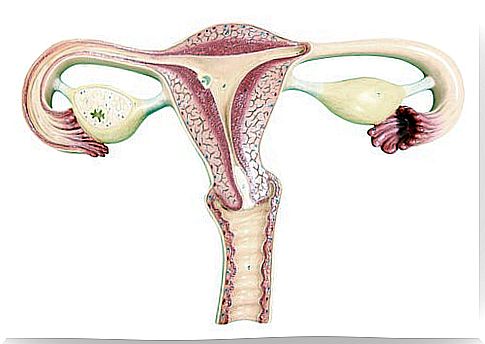New Research On Ovarian Cancer
According to figures from the American Cancer Society, ovarian cancer is the fifth leading cause of cancer death among women. The risk of suffering from it is 1 in 78, and the probability of dying from this disease is 1 in 108.
It is a disease that mainly affects older white women. More than half of the cases are among women over 63 years of age.
During the last 20 years, significant progress has been made in the fight against this disease. Fewer and fewer women are being diagnosed with ovarian cancer, and fewer and fewer are dying from it.
The most recent advances in this regard have to do with improvements in early detection, differential diagnoses and more effective treatments. Let’s see what the most recent innovations have been in this area.
1. Prevention of ovarian cancer

The latest research suggests that some ovarian cancers, particularly high-grade serous carcinomas, actually originate in the fallopian tubes. This discovery has opened new doors to combat the disease.
Apparently, early in cancer cells detach from the fallopian tubes and then stick to the ovaries. If this happens, the malignant cells begin to reproduce very quickly. Science does not know why.
The truth is that the removal of the fallopian tubes is already used as a preventive measure to avoid ovarian cancer. Evidence indicates that it is a convenient measure to prolong the normal function of the ovary.
2. New diagnostic tools

Currently, new tools are available to make an earlier and more accurate diagnosis of ovarian cancer. One of the methods that has been working on is the analysis of the protein pattern in the blood, or proteomics. This allows an early detection of the disease.
Likewise, functional magnetic resonance imaging has begun to be used to detect cancer early. Similarly, the OVA1 test has become a very effective means of determining the level of severity of a tumor, when it is detected.
This test allows us to know if a tumor is high or low risk. Those at high risk are probably malignant tumors and are usually referred to the oncologist. Low-risk patients are often referred to the gynecologist. The test does not determine if cancer is present, but it does provide valuable information in determining the steps to take.
3. Targeted therapy

Targeted therapy is one of the newest treatments for ovarian cancer. It has to do with the use of drugs and other substances to identify cancer cells and attack them, causing minimal damage to healthy cells.
Targeted therapy attacks the inner workings of cancer cells. It changes the way these cells grow, divide, and connect with other cells. Basically, he uses a medicine called bevacizumab (Avastin). This slows the growth of cells in some types of advanced cancer.
Other medications such as olaparib (Lynparza), rucaparib (Rubraca), and niraparib (Zejula) are also used. These are known generically as PARP inhibitors. They work by causing cancer cells to die.
4. Immunotherapy or cancer vaccine

Research conducted at the NYU Winthrop Hospital Cancer Care Center in Mineola, New York, shed a new light of hope in the fight against ovarian cancer. The initial experiment was done with only 26 women, but it yielded encouraging results.
The patients were treated with a vaccine called “Vigil”, specially designed against ovarian cancer. This vaccine is unique for each patient, since it is made with cells from each woman’s own tumor. Apparently, it manages to boost the response of the immune system.
All treated patients had recurrent ovarian cancer. Of the 26 volunteers, 20 managed to survive for three more years. All showed good tolerance to the treatment. Although it is not possible to speak of a solution yet, it is likely that important advances will be made along this path in the coming years.
Ovarian Cancer Prevention
Currently, researchers are constantly studying what causes this type of cancer and ways to prevent it.
At the moment, although there is no proven way to prevent these diseases completely, your risk may be able to be reduced. In any case, it is advisable to consult with the professional to obtain more information about the individual risk of developing cancer.








